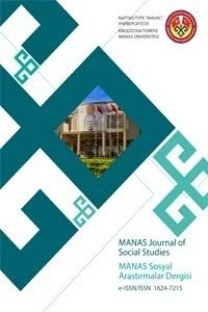A Simple Choice Model for Boundedly Rational Agents
Kısmi Rasyonel Bireyler İçin Basit Bir Seçim Modeli
___
De Clippel, G. ve Eliaz, K. (2012). Reason-based choice: A bargaining rationale for the attraction and compromise effects. Theoretical Economics, 7(1), 125-162.Dogan, S. ve Yildiz, K. (2018). Every choice function is pro-con rationalizable. Available at SSRN 3085542.
Franklin, B. (1887). The Complete Works of Benjamin Franklin: 1772-1775, volume 5. GP Putnam’s Sons.
Huber, J. ve Puto, C. (1983). Market boundaries and product choice: Illustrating attraction and substitution effects. The Journal of Consumer Research, 10(1), 31-44.
Payne, J. W. ve Puto, C. (1982). Adding asymmetrically dominated alternatives: Violations of regularity and the similarity hypothesis. Journal of Consumer Research, 9(1), 90-98.
Manzini, P. ve Mariotti, M. (2018). Dual random utility maximisation. Journal of Economic Theory, 177, 162-182.
Rieskamp, J. ve Busemeyer, J. R. ve Mellers, B. A. (2006). Extending the bounds of rationality: evidence and theories of preferential choice. Journal of Economic Literature, 44(3), 631-661.
Shafir, E. (1993). Choosing versus rejecting: Why some options are both better and worse than others. Memory & cognition, 21(4), 546-556.
Shafir, E., Simonson, I. ve Tversky, A. (1993). Reason-based choice. Cognition, 49(1), 11-36.
Yildiz, K. (2020). Dual pro-con Rationality. In the 5th International Conference on Multidisciplinary Sciences (icomus) Abstracts Book, May 28-30, 2020, Turkey, ISBN: 978-605-80062-8-7.
- ISSN: 1694-7215
- Yayın Aralığı: 4
- Başlangıç: 2001
- Yayıncı: KIRGIZİSTAN-TÜRKİYE MANAS ÜNİVERSİTESİ
Zeynep Gönülay ÇALIMLI, Bülent SALDERAY
Öğretmenlerin Kişilik Özellikleri ile Mesleki Profesyonelliği Arasındaki İlişki
COVID-19 Krizi, Telework ve Dijitalleşme: Çağrı Merkezi Çalışan Deneyimleri
Çiğdem ÇALAPKULU, Seda YEMEN, Esra DOĞAN
Modern Türk Resminde Algısal Sorunsallarının Kültürel Açıdan Değerlendirilmesi
Kısmi Rasyonel Bireyler İçin Basit Bir Seçim Modeli
Uluslararası Göçün İşsizlik Üzerindeki Etkisi: Avrupa Ülkelerine Yönelik Ampirik Bir Analiz
Sağlık Bilimleri Fakültesi Öğrencilerinin Psikiyatrik Hastalıklara İlişkin Algı ve Tutumları
Melike BOZTİLKİ, Elif ARDIÇ, Begüm GAMİŞ, Ekin ÇEVİK
Havayolu İşletmelerinde İki Aşamalı Veri Zarflama Analizi İle Etkinlik Ölçümü
